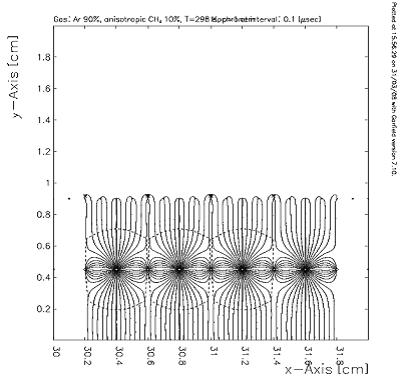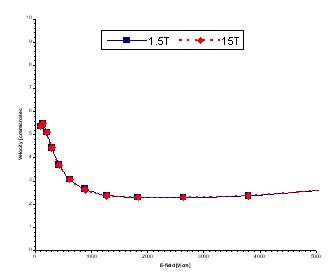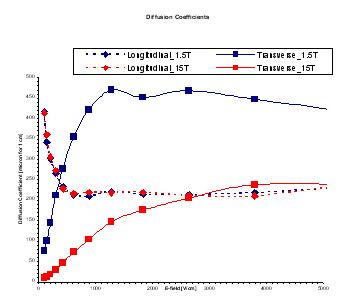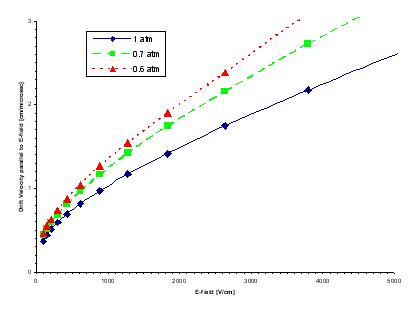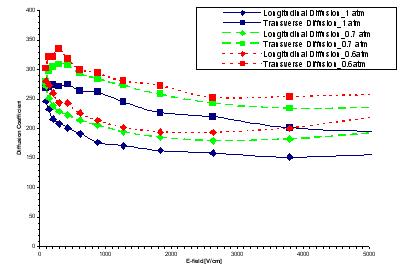Table of Contents
Garfield
The simulation program Garfield, created by Rob Veenhof at CERN, http://consult.cern.ch/writeup/garfield/, has been used to investigate possible detector gases and their properties inside a drift wire TPC chamber. The following is an overview of the current simulation progress. Main focus has been on P10 and D2 gases inside a two - dimensional drift wire chamber. Drift velocities and diffusion coefficients for the gases at varying magnetic fields and pressures are presented.
The Detector Setup
A two-dimensional drift wire chamber was built based on STAR wire values (sizes and spacing). The dimensions of the detector are 50cm by 120cm. The z direction (the length of the drift wires) is assumed to be infinite by Garfield. The E-field was setup with a field of ~115 V/cm. All electrons were directed towards the sense wires that were at a voltage of 1090 V, both shield wires and field wires were at ground (0 V).
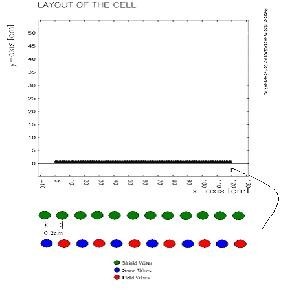
A magnetic field has been applied at a 1 degree angle off of the electric field. Magboltz, the interfaced program of Garfield that calculates the electron transport properties of the gases, currently restricts a parallel setup of the electric and magnetic fields to a 1 degree difference. Further graphs will show the result of variations in the magnitude of the magnetic field. The drift field lines for electrons around the wires (represented as points) are uniform and flow towards the sense wires.
Drift Gas Calculations
Two gas mixtures have been studied in Garfield, P10 (90% argon, 10% methane) and 100% D2. P10 is a well used TPC detector gas and is being studied as the main gas for use in the detector while it is being used as a TPC. D2 is being studied as a possible gas for the detector while in active target (AT) mode. Because it will also most likely be run at reduced pressures (below 1 atmosphere), D2 calculations were run for D2 at pressures of 0.6, 0.7, and 1.0 atm.
P10
Drift velocities and diffusion coefficients (transverse and longitudinal) are shown below. Two main magnetic field values were considered, 1.5T and 15T. While 1.5T is a more likely experimental value, we were interested in the effect of the magnetic field on the velocity and coefficients.
D2
Drift velocities and diffusion coefficients (transverse and longitudinal) were also calculated for D2. Pressure studies were the focus of this gas, as the AT will be run at reduced pressure.

